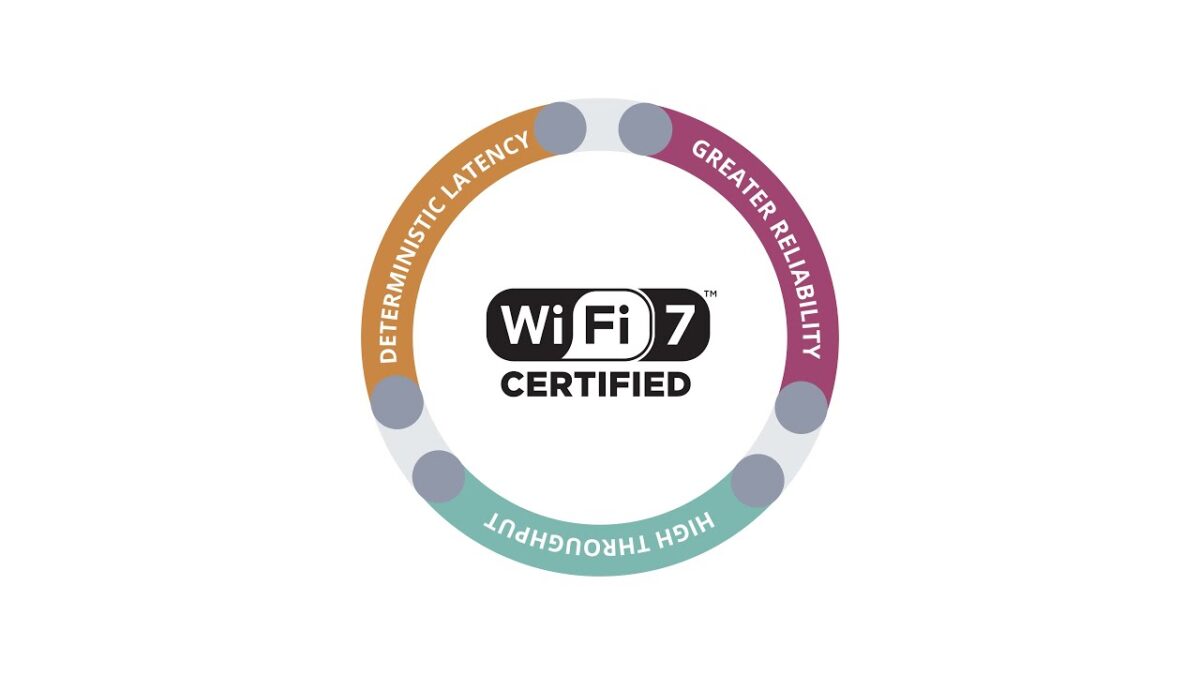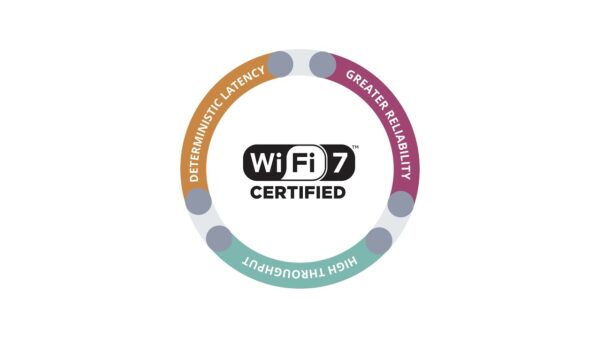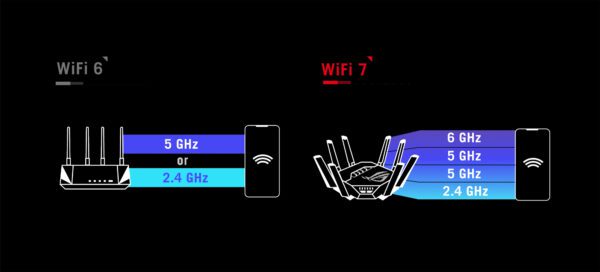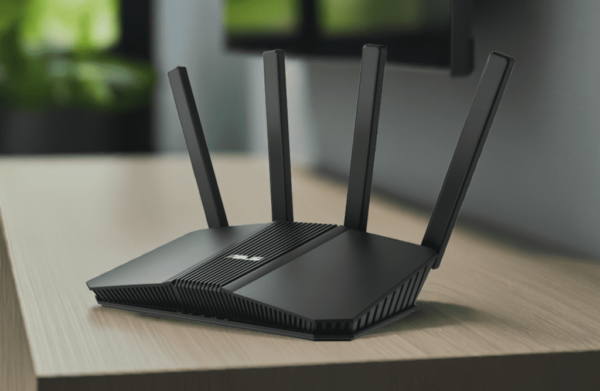Wi-Fi 7 Explained: Is It Time to Upgrade Your Router?
Hey there! If you’ve been shopping for a new router lately, you’ve probably noticed the newest kid on the block: WiFi 7. But with price tags often $100-200 higher than Wi-Fi 6 models, you might be wondering: “Is it worth upgrading now, or should I wait?”
Great question! At FlashRouters, we’ve been testing these new routers extensively for those looking to buy, and we’re here to help you decide if Wi-Fi 7 makes sense for your home or business right now.
What Exactly Is WiFi 7 / 802.11be?
Wi-Fi 7 (officially called 802.11be) is the newest wireless standard that promises speeds up to 46 Gbps – that’s about five times faster than Wi-Fi 6! But raw speed isn’t the whole story; the 6 GHz band also offers better performance in crowded environments.
This new technology brings several game-changing improvements:
- Multi-Link Operation: Your devices can use multiple Wi-Fi bands simultaneously
- Wider channels: Double the data highway width compared to Wi-Fi 6
- Better handling of interference: Keeps your connection stable even in crowded areas
- Lower latency: Less lag for gaming, video calls, and smart home devices is one of the key benefits offered by the latest generation of Wi-Fi technology.
The technology is still pretty new. While the official standard won’t be completely finalized until early 2024, manufacturers are already releasing “Wi-Fi 7 ready” devices based on the draft specifications. This means you can get most of the benefits now, with the possibility of even more features through future firmware updates.
Top 5 Signs You Need to Buy a Wi-Fi 7 Router Right Now
Not sure if you need to upgrade immediately? If you’re experiencing any of these common problems, a Wi-Fi 7 wireless network might be exactly what you need to enhance your network’s throughput.
1. Your Wi-Fi Slows to a Crawl When Everyone’s Online
What it looks like: Your video calls freeze, downloads take forever, and streaming buffers constantly during peak hours.
How bad is it: Your network regularly hits 70% of its capacity during busy times.
Real impact: You waste 15-30 minutes daily waiting for things to load or reconnect.
Wi-Fi 7 fix: Up to 5x faster speeds thanks to wider channels and better data encoding, so everyone gets the bandwidth they need.
2. Too Many Devices Fighting for Bandwidth
What it looks like: Your smart home devices disconnect randomly, and performance drops every time you add a new gadget.
How bad is it: You’ve got more than 50 devices connected to your network.
Real impact: Your smart home becomes unreliable, and you can’t add new devices without problems.
Wi-Fi 7 fix: Multi-Link Operation lets devices use different frequency bands simultaneously, effectively doubling or tripling available connections.
3. Lag Issues with Gaming or Video Calls
What it looks like: Your online games stutter, video calls freeze, and voice quality drops randomly.
How bad is it: Your connection delay varies by more than 15ms throughout the day.
Real impact: You miss crucial moments in games or important parts of meetings.
Wi-Fi 7 fix: New technology reduces worst-case delays by up to 80%, making your connection much more stable.
4. Your Neighbors’ WiFi Keeps Interfering with Yours
What it looks like: Your connection quality changes dramatically depending on the time of day.
How bad is it: Your signal strength fluctuates by more than 10dB throughout the day.
Real impact: Unpredictable connection issues making work and entertainment frustrating.
Wi-Fi 7 fix: Advanced interference handling features help your network perform well even in crowded apartment buildings or busy offices.
5. You’re Planning to Use Cutting-Edge Tech
What it looks like: You want to add 8K streaming, VR gaming, or smart home automation but your current network can’t handle it.
How bad is it: Your planned applications need more than 2Gbps of consistent bandwidth.
Real impact: You can’t deploy the cool new tech you want without constant problems.
Wi-Fi 7 fix: Future-proof your network with enough headroom for tomorrow’s demanding applications.
If three or more of these problems sound familiar, upgrading to a Wi-Fi 7 device now probably makes sense for you. The performance gains will likely outweigh the higher cost of being an early adopter.
What About the Price Premium of a Wi-Fi 7 Device?
Yes, Wi-Fi 7 routers definitely cost more than their Wi-Fi 6 counterparts right now. That’s the early adopter tax we all pay for cutting-edge technology. But here’s something to consider: a good router typically lasts 3-5 years, which means the extra cost breaks down to just a few dollars per month over its lifetime.
Ask yourself: Would you pay an extra $5-10 monthly to eliminate those frustrating Wi-Fi issues? For many of our customers, the answer is a resounding “yes!”
What’s Coming Next? Key Features & Wi-Fi 7 Technology Products
In our next post, we’ll dive deeper into the specific features of Wi-Fi 7 and explain which ones actually matter for your day-to-day usage. You’ll learn about Multi-Link Operation, 320MHz channels, and other technical improvements – all explained in plain English without the confusing jargon.
Ready to Explore the Benefits of Wi-Fi 7?
If you’re experiencing any of the problems we mentioned above and are ready to upgrade, check out our selection of Wi-Fi 7 routers. Each comes with our enhanced FlashRouters firmware for better security, VPN support, and performance.
Not sure which model is right for you? Our tech experts are always available to help you find the perfect router for your specific needs. Just reach out to our support team, and we’ll guide you through the options.
Stay tuned for our next post where we’ll break down the game-changing features of Wi-Fi 7, including its advantages over Wi-Fi 6!









